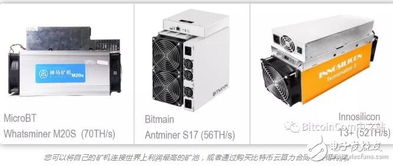In the ever-evolving world of cryptocurrencies, investing in Bitcoin mining machines has emerged as a thrilling opportunity for tech-savvy enthusiasts and seasoned investors alike. Bitcoin, the pioneer of digital currencies, relies on a decentralized network where powerful machines solve complex mathematical puzzles to validate transactions and mint new coins. This process, known as mining, not only secures the blockchain but also offers potential returns that can outpace traditional investments. However, diving into this arena requires a deep understanding of the tools involved, from robust mining rigs to comprehensive hosting services, all while navigating the volatile landscape of assets like Bitcoin (BTC), Dogecoin (DOG), and Ethereum (ETH).
At its core, a mining machine, or rig, is a specialized computer designed to handle the intensive computations required for cryptocurrency mining. These devices vary widely in power and efficiency, with models from leading manufacturers tailored for different scales of operation. For instance, investing in a high-end ASIC miner optimized for Bitcoin can yield impressive hash rates, measured in terahashes per second, which directly influence your chances of earning rewards. Yet, the real magic happens when you factor in electricity costs, network difficulty, and the current price of Bitcoin, creating a dynamic equation for return on investment (ROI). Picture the hum of servers in a vast mining farm, where rows of these beasts work tirelessly, turning raw energy into digital gold.
One cannot overlook the role of mining farms and hosting services in maximizing returns. These facilities, often located in regions with cheap electricity and cool climates, provide the infrastructure for miners who lack the space or expertise to run operations at home. By opting for hosting, investors can rent space for their machines, benefiting from professional maintenance and optimized cooling systems. This approach not only reduces operational headaches but also scales up potential profits, especially for those dabbling in multiple cryptocurrencies like ETH or DOG, which have their own mining protocols and reward structures.

Calculating investment returns in Bitcoin mining involves a blend of art and science. Start with the upfront costs: purchasing a miner might set you back several thousand dollars, depending on its specifications, while ongoing expenses like electricity and hosting fees add layers of complexity. A simple formula for ROI could look like this: subtract total costs from total rewards earned, then divide by the initial investment. But wait, the market’s unpredictability throws in curveballs—Bitcoin’s price can soar to new highs or plummet overnight, influenced by global events, regulatory news, or even social media buzz. Diversifying into altcoins like Dogecoin, with its lower entry barriers, or Ethereum, which is shifting towards proof-of-stake, adds another dimension of risk and reward to your portfolio.
Exchanges play a pivotal role in this ecosystem, serving as the bridge between mined cryptocurrencies and real-world value. Platforms like Binance or Coinbase allow miners to sell their rewards instantly, converting BTC or ETH into fiat currency or other assets. Yet, this convenience comes with fees and security considerations, reminding us that the crypto world is as much about strategy as it is about technology. Imagine the thrill of watching your mining rig contribute to the blockchain while your exchange account reflects growing balances—a testament to the burst of innovation in this field.
Of course, no guide would be complete without addressing the challenges. The environmental impact of mining, with its high energy consumption, has drawn criticism and led to calls for greener alternatives. Additionally, competition intensifies as network difficulty rises, potentially eroding profits for smaller operators. To counter this, savvy investors might explore cloud mining services, where you rent hashing power rather than physical machines, blending the best of both worlds. From the playful meme origins of Dogecoin to the smart contract capabilities of Ethereum, the diversity of cryptocurrencies ensures that mining isn’t a one-size-fits-all endeavor.
In terms of hardware, distinguishing between a miner and a mining rig is crucial. A miner typically refers to the software or the individual running it, while a rig encompasses the physical setup of GPUs, ASICs, and cooling systems. For Bitcoin, ASICs dominate due to their efficiency, but for ETH or DOG, GPU-based rigs might still hold value, especially amid Ethereum’s transition. This evolution underscores the need for adaptability in your investment strategy, ensuring that your setup remains profitable amid technological shifts.

Looking ahead, the future of Bitcoin mining machine investments shines with possibility, yet it’s tempered by uncertainty. As governments regulate the space and innovations like quantum computing loom, early adopters could reap substantial rewards. Whether you’re hosting your machines in a professional farm or managing a home setup, the key lies in education, patience, and a willingness to embrace the unpredictable nature of crypto markets. Ultimately, this guide equips you to navigate the exhilarating path of mining, turning potential into profit in the digital age.
This guide masterfully demystifies Bitcoin mining returns, blending tech insights with financial thrills, but beware: it’s like chasing digital gold—exhilarating yet risky for your wallet and planet!